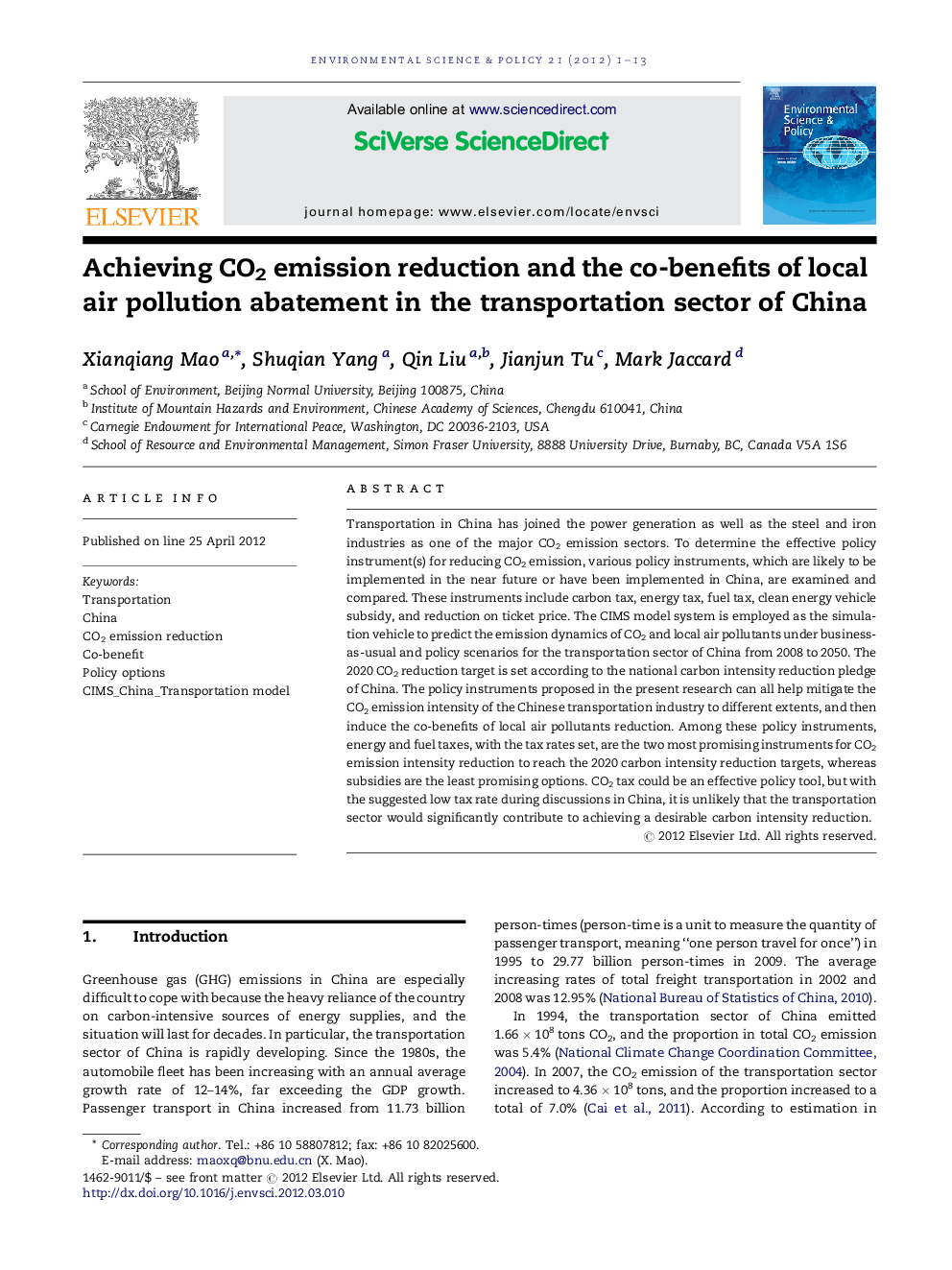| Article ID | Journal | Published Year | Pages | File Type |
|---|---|---|---|---|
| 1053678 | Environmental Science & Policy | 2012 | 13 Pages |
Transportation in China has joined the power generation as well as the steel and iron industries as one of the major CO2 emission sectors. To determine the effective policy instrument(s) for reducing CO2 emission, various policy instruments, which are likely to be implemented in the near future or have been implemented in China, are examined and compared. These instruments include carbon tax, energy tax, fuel tax, clean energy vehicle subsidy, and reduction on ticket price. The CIMS model system is employed as the simulation vehicle to predict the emission dynamics of CO2 and local air pollutants under business-as-usual and policy scenarios for the transportation sector of China from 2008 to 2050. The 2020 CO2 reduction target is set according to the national carbon intensity reduction pledge of China. The policy instruments proposed in the present research can all help mitigate the CO2 emission intensity of the Chinese transportation industry to different extents, and then induce the co-benefits of local air pollutants reduction. Among these policy instruments, energy and fuel taxes, with the tax rates set, are the two most promising instruments for CO2 emission intensity reduction to reach the 2020 carbon intensity reduction targets, whereas subsidies are the least promising options. CO2 tax could be an effective policy tool, but with the suggested low tax rate during discussions in China, it is unlikely that the transportation sector would significantly contribute to achieving a desirable carbon intensity reduction.
► Transportation of China has become a major GHG and air pollutant emitting sector. ► Taxes and subsidies are tested for the effects of abating GHG and pollutant for it. ► A CIMS_China_Transportation model is employed to do the policy simulation. ► Findings suggest that energy and fuel taxes are the most promising policy option. ► A low CO2 tax rate in discussion and subsidies are far from effective enough.
